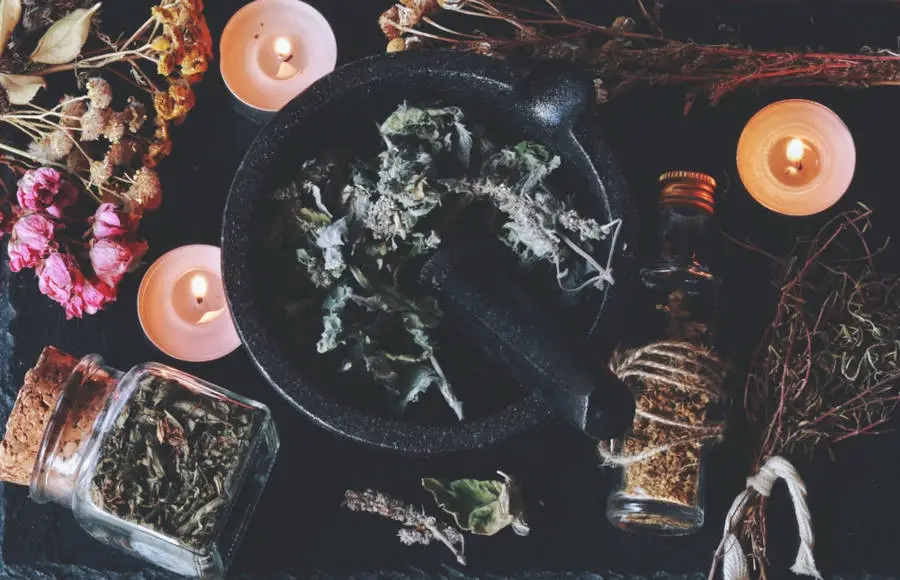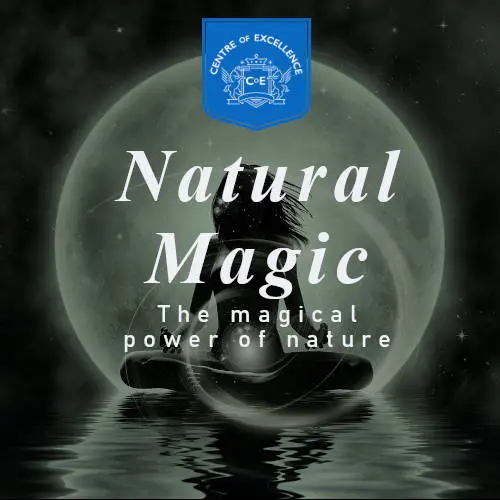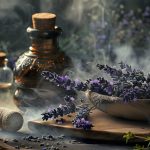Herbal magick is a tradition that dates back to antiquity when medicine was not separated from magick and has been used for many purposes. It has been practiced by healers, shamans, medicine women, druids, and other traditional witches all over the world.
Physical healing was often accompanied by ritual and prayer. The patient could be treated with a herb tea as well as a smudging ritual and an incantation to the spirits for a quick recovery.
In addition to healing, plants were used to magickal works, such as the creation of potions, talismans, amulets, and spells.
Plants are living entities they possess their own energy and properties. Thus, a plant may have a better effect or it may be preferable in a given situation than others. The same goes for both healing and magickal working.
The combination of healing and magickal properties makes herbs powerful components in modern magick. This along with the huge number of applications makes herbal magick one of the most effective types of magick.
Herbal magick is is a type of natural magick. This means that:
- Incorporates all four elements.
- It does not need a lot of preparation and tools to perform.
- You can practice it anywhere, using what you have at your disposal.
- It isn’t necessary to cast a sacred circle.
The Elemental Balance of Plants
In terms of magickal meaning, plants personify the power of the four elements that interact to develop and sustain life. They start as seeds on the Earth’s soil, where the minerals required to maintain their life are located.
They engage with the “fire” of sunlight, that makes the procedure of transforming co2 into oxygen feasible (a process that has a direct effect on air quality).
Air, subsequently, promotes more plant life in the form of wind. It strengthens the growth of stems and leaves and also spreads seeds to continue the cycle.
Of course, it is obvious that all plants need water to live and grow. However, they play an essential role in Earth’s water cycles by cleansing water and assisting to move it from the ground to the atmosphere.
There is no better example of how the elements of Earth, Air, Water, and Fire collaborated than in the magical existence of plants.
What is considered “Herb”?
In Herbal magick “herb” considered any plant that is useful to humans. This includes fruits, vegetables, flowers, trees, shrubs, grasses, and weeds.
Generally, any plant that can be used for cooking, medicine, fragrance, clothing, or we can make useful objects from it.
Also, keep in mind that this description of “herb” applies to plants that have physical benefits to the body, as well as to those that are known to be harmful and potentially deadly (such as belladonna and henbane). Of course, those who have deep knowledge about herbs, understand that no plant is good or bad. But each has its own particular uses.
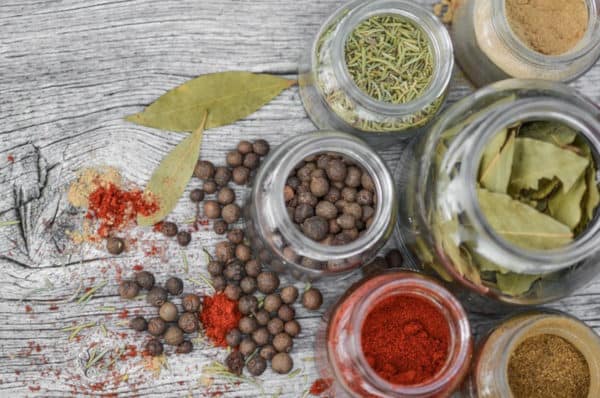
How does herbal magick work
But how, exactly, does herbal magick work?
Some magicians prefer simply to follow their intuition and traditional methods. They care more about the results and less about the processes that bring them, and that’s fine. But if you want to know how herbal magick works here are some theories.
1. Rational Theory. Herbs and plants do not (or may not) have inherent magickal power. Their value to the magician comes from his or her belief in their power.
So, while you could theoretically replace Cedar for another herb that you can find more easily in a prosperity spell, your belief that the spell is not as strong due to Cedar’s absence, will return poor results. On the other hand, if you replace Cedar for another herb that you strongly believe is best for this occasion, your results will be great.
2. Psychological Theory. Each plant has its own color, odor texture, and taste. These physical properties of plants arouse specific responses in the magician, who then produce the magickal results.
All our senses have the power to evoke deep memories and emotions (mainly the smell). These senses can bypass the conscious mind and affect directly the subconscious, which is the main purpose of any magick work.
For example, spearmint is revitalizing to the magician and works in cleansing spells, while Rose inspires sensual thoughts and works in love spells.
However, in this model, the magical properties of a plant are not absolute but depend on the magician’s cultural and personal experience.
3. Energetic Theory. Each plant has a specific energy-vibration that exists when it grows and also remains after harvest. So the magician’s work is to choose the right herb and the right method to use it, according to his intention.
This theory has dominated western magick for two hundred years and is based on a system of energetic properties and correspondences.
According to this theory, the magician must combine various elements such as herbs, crystals, colors and check the planetary hours in order to create a favorable energetic environment for the manifestation of his desired outcome.
This theory differs from the previous ones because herbs are supposed to have a magickal vibration whether or not the magician is present.
Herbs that have been cultivated for use in magick are supposed to give better results.
4. Animist. Animist theory goes a step further than energetic theory. According to this, each plant has its own vibrational signature but furthermore has consciousness. Or maybe there is a spirit that the magician must persuade to give his energy to the magickal work. In both cases, the plant is not more a mere tool but a collaborator.
Thus, a magician who acts according to this theory must find the right plant for his spell and in addition the correct method of collecting and using it. This is because he does not want to offend the plant’s spirit but to make it work with him for his sake.
This approach is the most bizarre of the four but is probably the closest to the way our ancestors thought.
Each of these theories has its own “logic”, none is better than others. You can draw from one or all of them, it doesn’t matter. I feel more connected to one of them because of my personality and my whole perception of magick. But when we talk about magick our personal beliefs comes into the equation. So there is no right or wrong, only what works for you.
Do you want to learn more about Magick? Check out our recommendations at “Magick Bookshelf” and many free resources at our “Free Magick Library“
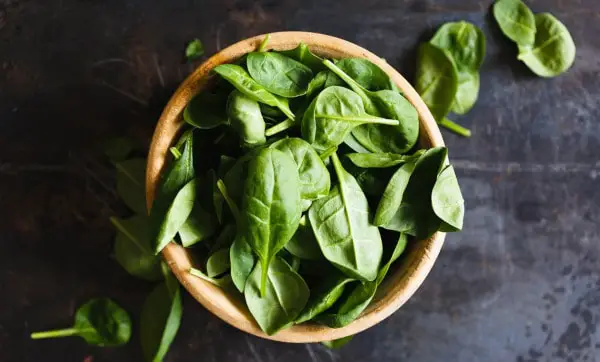
How to Use Herbs for Magick
Herbal magick can be practiced in many different ways because herbs are, probably, the most versatile elements in magick. You can use them in all kinds of forms from a potion to a poppet.
Here is a list of the most popular forms of Herbs in magick.
Charms and Sachets
A sachet (or charm) is a little bag having herbs. Due to its size, it is very easy to carry it with you (in the inner pocket of a jacket) or to place it somewhere (front door, windows, your workplace or car). You can make a sachet for every magickal purpose and if you want to add power to your spell you can choose the color of the bag accordingly (check here the table of color correspondences – opens in new tab). It is very easy to make a sachet like this. Take a square piece of fabric and place a handful of herbs on it. Pick up the ends of the fabric and tie them with a cord. Your charm is ready!
Teas (Infusions)
A magickal tea is made of herbs soaked in hot water. Herbs can be bought as pre-made bags or loose leaf with a strainer. Kettles from stainless steel are the most popular for boiling water because they don’t change the neutral flavor in any way. Before infusing your herbs you must always charge them.
Apart from drinking, you can add your infusion to your bath or use it in any other way that is suitable for your intention.
But if you intend to drink it, make sure that your herbs are suitable for consumption.
Bath
Bath is a very common form of herbal magick. You can use two methods for this.
The easy one. Make an infusion of herbs that are appropriate for your purpose and pour them directly into the water of your bath.
A more difficult one. Think that you are making a huge tea. Get a fabric bag (hessian or muslin is perfect) or make a sachet, like the one described above (Charms and Sachets). Add in fresh or dried herbs and place it in your ritual bath. In order to get infused the water must be very hot, so be careful not to burn yourself.
Powders
To turn the herbs into a powder you need to pulverize them. To do this simply take a small amount of the herbs, put them in a mortar and pulverize with a pestle. During the process, keep visualizing the properties of the plants affecting your magickal purpose.
You can also use these powders with other types of magick when you need to add energy to your spell.
Ointments
Ointments are similar to creams but they don’t get absorbed into the skin quickly. Instead, they form a protective layer over the skin. Homemade ointments contain no water but fats or oils.
To make an ointment, melt your base ingredient with heat and add your powdered herbs. Transfer the mixture to an airtight container while it is still warm, but do not secure with a lid until the ointment has cooled completely.
Be careful not to burn yourself and always wear rubber gloves.
As you work with your mix, visualize the properties of your herbs and your goals as if they had already been manifested. When it is ready, anoint your body with it at the pulse points.
Oils
You can use oils in many ways in magick. To rub a candle into a candle magick ritual, to anoint objects or your body and generally in any case you want to reinforce the powers of a spell.
An easy way to make an oil for magickal use is to put fresh herbs in vegetable oil (almond, olive, grapeseed, sunflower e.t.c) and let them soak for a few days. Then drain them.
Another way is to buy essential oils and make your own blend, using vegetable oil as a base. Add a few drops of your essential oils and rotate clockwise to blend them. Again, as you work with your blend visualize your goals as if they had already been manifested.
Do you want to learn more about Magick? Check out our recommendations at “Magick Bookshelf” and many free resources at our “Free Magick Library“
Incenses
The word “incense” is derived from the Latin “incensare” meaning to sacrifice, burn.
Herbs are materials commonly used as incense to produce a fragrant scent. Alone or in combination with essentials oils and plant resin.
They can be used for aesthetic purposes, in healing, in meditation, and in many ceremonies, including magick rituals.
In magick, we use them powdered or granulated. If you want to make your own incense, take a small amount of herbs (or a mix of herbs), put them in a mortar and pulverize with a pestle.
During the process, visualize the properties of the plants affecting your goal.
Then, burn them on hot charcoal in a censer while you meditate on their properties or use them as a background while you perform a magick ritual.
Poppets
A poppet is made of fabric and filled with the appropriate herbs for your intention. To make your own poppet you need some sewing skills. Alternatively, you can buy it already made from a specialized store or e-shop and just fill it with the proper herbs. There is a misconception, due to “Hollywood magic”, that poppets are used to harm or manipulate others. This is not true, on the contrary, poppets are great for protective and healing spells and work best if you use it on yourself. Of course, you can use them for any kind of positive purpose.
Useful note: It is not wise to use any kind of magick to harm others. Remember that what you give out is what you get back (three-fold according to Wicca). But if you feel that you want to cast a spell to harm someone…stop, and go back to the basics of magick. If you want to be a magician, first of all, you must conquer yourself. The natural laws are immutables. You must act with responsibility.
Related reading: Common Mistakes People Make When Learning Magick – Opens in new tab
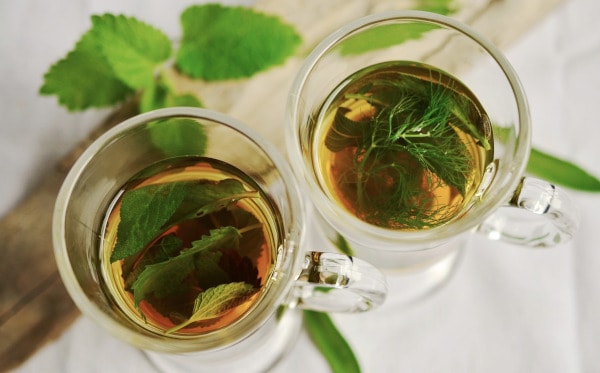
A Step by Step Guide
Here is a guide on how to practice herbal magick. You can use these steps with all kind of forms mentioned above.
- Set your goal. This is the first step for any kind of magick. Try to be as clear as possible. Choose only one goal for each spell. Be ethical.
- Choose the right herbs. Check our table of Herb correspondences here (opens in new tab). If you want to enhance your study on this subject the Cunningham’s Encyclopedia of Magical Herbs (Aff.link) is a great resource.
- Use high-quality ingredients. If possible, use organic and fresh herbs and avoid any synthetic ingredients. With that said, I do not mean that you must buy expensive ingredients or rare herbs for your magick. You can replace the herb that you don’t have with another with similar properties. Keep your ritual simple, subconscious likes simplicity.
- Charge your herbs before cast your spell. Put the herbs in a bowl and start focusing on their special magickal properties. Without losing your concentration, rub your hands and place them over the bowl. Imagine your herbs glowing, full of magickal energy. Keep doing this until you feel a tingling in your fingers. You have to charge your herbs separately, one by one. If you want to strengthen your concentration you can burn a candle of the appropriate color (check here the table of color correspondences – opens in new tab) or make a small chant with the name of the herb and its properties.
- Now that all your herbs are charged, start working with them. Make whatever is appropriate for your intention (charm, poppet, powders, etc). During the process, visualize the properties of your herbs and your goals as if they had already been manifested. Make a chant with your intention, burn a candle and generally whatever can help you to stay focused.
- Use your craft. If you have made a sachet or poppet, place it in a proper place, if you have made an incense burn it e.c.t. Do so with full conviction that your intention has already manifested and feel deep gratitude for that.
- If you work with moon phases here is a table of their magickal correspondences – opens in new tab.
- The hard part…forget your magick. You did your best, you don’t need to focus on it anymore. So continue with your day and forget about your ritual. Do something completely different and distracting. The one thing that you must do is to work towards your desired outcome. Never forget that the effects of magick will constantly come to you in a sensible way. They are constantly unexpected and appear as a coincidence. (Related reading: Synchronicity Meaning and Examples – Reality or Bias? – opens in a new tab)
- A good practice is to keep a diary with your rituals so you can go back and take a look at what works best for you.
Quick Correspondences List
This is a small list of Herbs correspondences according to your intention. For more details check our “Herbs Correspondences” table – opens in a new tab.
Fertility
Agapanthus, Agaric, Arnica, Banana, Bistort, Carrot, Chickweed, Common Dock, Cuckoo-flower, Cucumber, Cyclamen, Daffodil, Fig, Grape, Horsetail, Mandrake, Mistletoe, Mustard, Myrtle, Olive, Patchouli, Peach, Pine, Pomegranate, Rice, Sunflower, Wheat
Healing
Anemone, Apple, Balsam, Bracken, Bay, Cedar, Cinnamon, Coriander, Cucumber, Dock, Eucalyptus, Fennel, Gardenia, Ginseng, Heliotrope, Henna, Ivy, Lavender, Lime, Mint, Myrrh, Nettle, Olive, Peppermint, Pine, Plantain, Rose, Rosemary, Saffron, Sandalwood, Spearmint, Thyme, Vervain, Wintergreen.
Legal Matters
Buckthorn, Cascara Sagrada, Celandine, Hickory, Marigold, Skunk Cabbage.
Love
Aloes, Apple, Apricot, Brazil Nut, Cardamom, Chamomile, Cinnamon, Clove, Cherry, Copal, Coriander, Crocus, Daffodil, Dogbane, Elm, Fig, Gardenia, Geranium, Hibiscus, Hemp, Hyacinth, Jasmine, Lily, Love Seed, Lovage, Maidenhair, Maple, Mimosa, Mistletoe, Orchid, Papaya, Pear, Pimento, Quassia, Raspberry, Rose, Rosemary, Sarsaparilla, Senna, Strawberry, Thyme, Tamarind, Vervain, Vanilla, Violet, Willow.
Luck
Alfalfa, Aloe, Bamboo, Banyan, Basil, Be-Still, Cabbage, Calamus, China Berry, Chypre, Cinchona, Corn, Daffodil, Daisy, Fern, Grains of Paradise, Heather, Houseleek, Irish Moss, kava-Kave, Male Fern, Moss, Nuts, Orange, Pineapple, Pomegranate, Snakeroot, Star Anise, Straw, Wood Rose.
Money
Alfalfa, Bergamot, Blackberry, Blue Flag, Briony, Bromeliad, Buckwheat, Cashew, Cedar, Chypre, Clove, Comfrey, Dill, Dock, Fenugreek, Fumitory, Galangal, Ginger, Grape, Horse Chestnut, Jasmine, Maple, May Apple, Mint, Myrtle, Oats, Oregon Grape, Patchouli, Pea, Pine, Pineapple, Rice, Sesame, Tonka, Wheat, Woodruff.
Prosperity
Alfalfa, Almond, Banana, Bayberry, Citronella Mandrake, Musk, Nuts, Oakmoss, Oregon Grape, Wood Aloe.
Protection
Acacia, Acicia, Aconite, Agrimony, Ague Root Aloe, Althea, Bamboo, Basil, Bay, Bloodroot, Blueberry, Cactus, Carnation, Cedar, Cinnamon, Clove, Curry, Dragon’s Blood, Dogwood, Devils Bit, Ebony, Eucalyptus, Fennel, Foxglove, Frankincense, Garlic, Gourd, Grain, Hazel, Hellebore, Ivy, Kelp, Juniper, Larch, Lilac, Liquidamber , Mugwort, Mimosa, Nettle, Olive, Onion, Papyrus, Pepper, Pine, Ragwort, Raspberry, Rosemary, Sage, Sloe, Sandalwood, Tamarisk, Venus Flytrap, Wax Plant Witch Hazel, Yucca
Psychic Powers
Acacia, Althea, Amper, Bay, Bistort, Borage, Celery, Citron, Cinnamon, Deerstongue, Eyebright, Galangal, Grass, Honeysuckle, Lemongrass, Mace, Mastic, Mugwort, Peppermint, Rowan, Sandalwood, Saffron, Star Anise, Thyme, Wormwood, Yarrow, Yerba Santa, Yew.
Purification
Alkanet, Asafoetida, Bay, Benzoin, Bloodroot, Cedar, Chamomile, Coconut, Copal, Eucalyptus, Euphorbia, Fennel, Grapefruit, Hyssop, Iris, Lavender, Lemon, Lime, Mimosa, Myrrh, Parsley, Peppermint, Rosemary, Sage, Shallot, Thyme, Tobacco, Vervain, Yucca.
Sexuality
Apricot, Cinnamon, Coconut, Ginger, Ginseng, Hibiscus, Hemlock, Lemongrass, Licorice, Mint, Nettle, Parsley, Patchouli, Rosemary, Savory, Vanilla, Ylang Ylang.
Travel
Comfrey, Eryngo, Kelp, Mint
Do you want to learn more about Magick? Check out our recommendations at “Magick Bookshelf” and many free resources at our “Free Magick Library“
More About Herbal Magick
- Safety first. Make sure you heed all the warnings about toxic herbs and learn how to use them safely and in what quantity. This is especially important if you are using them when pregnant or in children.
- Growing and harvesting your own herbs literally keeps you in touch with the forces of the Earth.
- Growing your own herbs is a good way to get access to fresh herbs. Excess may be dried or frozen for future use.
- If you don’t have a garden, you can grow many kinds of herbs on a balcony or window sill.
- When you go to find herbs in the wild, never completely strip an area of them.
- You can dry herbs yourself by hanging them upside down in small bunches. Make sure that air can circulate around them.
- You can purchase the most common herbs in many supermarkets and health food shops or you can even buy them online (check this starter set on Amazon: 20-herb Starter Set (Organic and Wild Harvested Herbs –Aff.link).
- Every herb has many magickal properties. If you choose wisely, you can do many different things with just a few multi-purpose herbs.
- Use your own intuition when working with herbal magic, instead of just following the information you found in books and articles.
Conclusion
Herbs are part of all magick traditions, learning how to use them correctly will help you no matter what path you choose. A great advantage of herbal magick is that it can be combined with almost any other kind of magick to enhance it.
In addition, herbal magick is very practical. In fact, much of it can be done with the ingredients you probably already have in your kitchen.
At first, the amount of information available about herbal magic can be overwhelming. But you can start with the magickal properties of only one or two herbs and continue to improve your knowledge step by step until you reach the desired level. So, feel free to experiment with different combinations and stick with that which fits best for you.
Now take the related Quiz, to check your knowledge on Herbal Magick!
Related reading: Candle Magick Spell to Attract Money – Simple to Advanced
Keep Studying – Keep practicing!
Stay in Touch
 Join our newsletter by using the forms on this website or click here!
Join our newsletter by using the forms on this website or click here! Follow us on Google News
Follow us on Google News Follow us on Facebook
Follow us on Facebook
Featured image from Depositphotos
Related Books
- “Cunningham’s Encyclopedia of Magical Herbs” by Scott Cunningham (Aff.link)
- “The Green Witch: Your Complete Guide to the Natural Magic” by Arin Murphy-Hiscock (Aff.link)
- “Wicca Herbal Magic: A Practical Beginner’s Herbal Guide” by J. Mellor, Gaia (Aff.link)
- “Garden Witch’s Herbal: Green Magick, Herbalism & Spirituality” by Ellen Dugan (Aff.link)

